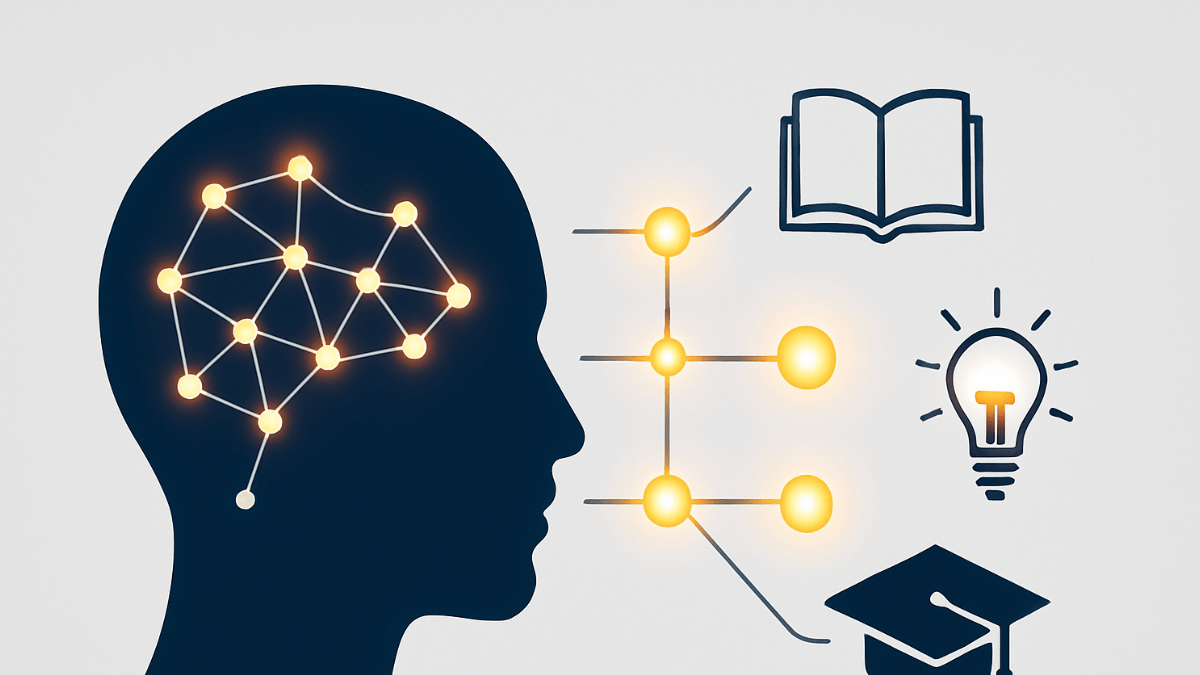How to Improve Memory: A Science-Backed Guide for Students & Professionals
How many times have you walked into a room and instantly forgotten why? Or struggled to recall a crucial detail from a meeting, a key name, or a vital piece of information for an upcoming exam? For students facing a mountain of material to memorize, and for professionals needing to retain critical knowledge to stay competitive, the frustration of a faltering memory is a universal experience. It can impact your productivity, undermine your confidence, and act as a frustrating barrier to your cognitive potential.
The good news, confirmed by decades of neuroscience, is that memory isn’t a fixed, unchangeable trait you’re simply born with. It is a dynamic and malleable cognitive skill that can be actively trained, strengthened, and significantly improved through science-backed techniques and consistent effort. Think of your memory like a muscle: the more you strategically exercise it with the right methods, the stronger, faster, and more reliable it becomes.
This guide is designed to cut through the generic, surface-level advice and provide you with a comprehensive, actionable blueprint for enhancing your memory. We will explore the fundamental mechanics of how memory works, establish the non-negotiable lifestyle habits that create a foundation for a healthy brain, and then dive deep into the specific, evidence-based techniques used by memory champions and top performers. Whether you’re a student aiming for academic excellence or a professional looking to sharpen your cognitive edge, these strategies will empower you to learn more effectively, retain information longer, and recall it with greater ease when it matters most.
Understanding How Your Memory Works (A Simple Model)
To effectively improve your memory, it’s essential to understand a basic model of how it functions. While the neurobiology is incredibly complex, we can simplify the process into three core stages. Understanding these stages is critical because most memory “problems” are actually issues with the encoding or retrieval phases, rather than a fundamental flaw in your brain’s storage capacity.
- Encoding: The “Saving” Process Encoding is the initial process of converting sensory information into a construct that can be stored in the brain. It’s the moment of learning, where your brain decides what’s important enough to “save.” This isn’t a passive process. Effective encoding requires attention and engagement. If you’re distracted while reading a report or listening to a lecture, the information is poorly encoded, making it nearly impossible to remember later. Deeper levels of processing—thinking about the meaning of the information and connecting it to knowledge you already possess—lead to much stronger encoding than shallow processing, like simply repeating a word over and over.
- Storage: The “Filing” System Once information is encoded, it needs to be stored or maintained over time. This involves both short-term and long-term memory systems. Short-term memory is like your brain’s RAM—it holds a small amount of information for a very brief period. For information to last, it must be transferred to long-term memory, a process called consolidation. This is a complex process that happens largely during sleep, where the brain strengthens the neural pathways associated with the new memory, effectively filing it away for future use.
- Retrieval: The “Search” Function Retrieval is the process of accessing and bringing stored information back into your conscious awareness. It’s the “search” function of your brain. Memory failures often occur at this stage. The information might be stored correctly, but you can’t find the right “cue” to access it. This is the classic “tip-of-the-tongue” phenomenon. The strength and context of the initial encoding play a huge role here; the more connections you created when you first learned the information, the more potential pathways you have to retrieve it later.
Foundational Lifestyle Habits for a Better Memory
Before diving into specific memory techniques, it’s crucial to establish a solid foundation of healthy lifestyle habits. These are the non-negotiable prerequisites for optimal brain function and a sharp memory. Neglecting these is like trying to run sophisticated software on outdated, malfunctioning hardware.
The Critical Role of Sleep in Memory Consolidation
Sleep isn’t just downtime; it’s a period of intense cognitive processing, particularly for memory consolidation. While you sleep, your brain is hard at work replaying the day’s events, strengthening important neural connections, and weeding out irrelevant information. During deep sleep (NREM Stage 3), the brain engages in a process that solidifies factual and event-based memories. Later in the night, during REM sleep, it works on integrating new skills and emotional memories. Chronic sleep deprivation severely impairs this consolidation process, making it difficult to retain what you’ve learned. Prioritizing <u>sleep optimization</u> is non-negotiable for a healthy memory. Aim for a consistent 7-9 hours of quality sleep each night to allow your brain the time it needs to properly file away your memories.
How Aerobic Exercise Boosts Memory
Regular aerobic exercise has profound and well-documented benefits for brain health and memory. It works in several ways. First, it increases heart rate, which pumps more oxygen-rich blood to the brain. Second, and more importantly, it stimulates the release of Brain-Derived Neurotrophic Factor (BDNF), a powerful protein that acts like fertilizer for your neurons. BDNF supports the growth, survival, and plasticity of neurons, particularly in the hippocampus, the key brain region for memory formation. Even moderate-intensity exercise, such as a brisk 30-minute walk, cycling, or swimming most days of the week, can have a significant positive impact on your memory capacity and reduce the risk of age-related cognitive decline.
The Link Between Chronic Stress and Forgetfulness
Chronic stress is a memory killer. When you’re constantly stressed, your body is flooded with the hormone cortisol. While useful in short bursts, prolonged exposure to high levels of cortisol can be toxic to the brain. It has been shown to shrink the hippocampus, damage neuronal connections, and interfere with both the formation of new memories and the retrieval of old ones. Learning effective stress management techniques is therefore crucial for protecting your memory. Practices like <u>mindfulness meditation</u>, deep breathing exercises, or spending time in nature can lower cortisol levels and buffer the negative impacts of stress on your cognitive function.
Powerful Techniques to Enhance Encoding & Learning
Once you have the foundational lifestyle habits in place, you can leverage specific techniques to dramatically improve how you encode new information, making it more likely to be stored and easily retrieved.
The Spaced Repetition Technique
Spaced repetition is a highly effective learning method that involves reviewing information at increasing intervals over time. Instead of cramming for hours on end, you strategically space out your review sessions.
- How it Works: You might review a new concept 10 minutes after learning it, then 24 hours later, then 3 days later, then a week later, and so on. This technique leverages the “spacing effect,” a cognitive phenomenon showing that our brains learn and retain information far more effectively when learning is distributed over time. Each time you revisit the information, you are signaling to your brain that it is important, which forces it to strengthen the memory trace.
- Practical Application: This is the principle behind most modern flashcard apps (like Anki or Quizlet). You can create digital flashcards for key concepts, and the app’s algorithm will automatically show you the cards at the optimal time for review to maximize long-term retention.
Active Recall (The Testing Effect)
Active recall, also known as retrieval practice or the “testing effect,” is arguably the most powerful learning technique ever discovered. It involves actively trying to retrieve information from your memory without looking at the source material.
- How it Works: Instead of passively rereading your notes, you actively test yourself. After reading a chapter, close the book and try to summarize the key points from memory. Create questions for yourself and try to answer them. The mental effort involved in this act of retrieval is what solidifies the memory, making it far more durable than passive review. [Citation Needed: Study on the Testing Effect]
- Practical Application:
- After a meeting, spend five minutes writing down the key decisions and action items from memory before looking at your notes.
- When studying, use flashcards but make sure you try to answer the question out loud before flipping the card.
- Try to explain a complex concept you’ve learned to a friend or colleague in simple terms. If you can’t teach it, you probably haven’t learned it deeply enough.
The Method of Loci (The Memory Palace)
The Method of Loci is a powerful mnemonic strategy that dates back to ancient Greece and is used by memory champions today. It involves mentally associating the information you want to remember with specific locations (loci) within a familiar mental space.
- How it Works: This technique leverages our brain’s superb spatial memory. You choose a familiar location, like your home, and plan a specific route through it. Then, you place vivid, memorable mental images of the items you want to remember at specific points along that route. To recall the information, you simply take a mental “walk” through your memory palace, “seeing” each item in order.
- Practical Application: Let’s say you need to remember a shopping list: salmon, walnuts, and blueberries. In your memory palace (your home), you might vividly imagine a large salmon flapping on your doormat (location 1), then walk into the living room to see walnuts scattered all over your sofa (location 2), and finally go into the kitchen to find the sink overflowing with blueberries (location 3). The more bizarre and vivid the image, the better it will stick.
Chunking: Breaking Down Complex Information
Our short-term, or “working,” memory has a very limited capacity, often cited as holding around 4-7 items at a time. Chunking is a technique that helps overcome this limitation by organizing large amounts of information into smaller, more meaningful units or “chunks.”
- How it Works: By grouping items together based on a pattern or meaning, you reduce the number of individual elements your brain has to hold. For example, trying to remember a long string of numbers like
194520231066is nearly impossible. But if you “chunk” it into meaningful dates—1945,2023,1066—you only have to remember three chunks instead of twelve individual digits. - Practical Application: When learning a new, complex topic, don’t try to memorize every detail at once. Break it down into its core components or themes. Create a mind map or an outline that groups related ideas together. By understanding the structure and creating these meaningful chunks, you make the information far easier to encode and recall.
Nutrition & Supplements for Memory Support
Just as your overall health impacts your memory, so too does your diet. Certain <u>key brain-boosting foods for memory</u> provide the essential nutrients your brain needs for optimal function. Omega-3 fatty acids from fatty fish, antioxidants from blueberries, and choline from eggs are all crucial for supporting memory and overall cognitive health.
In addition to a nutrient-rich diet, certain well-researched <u>nootropics for memory</u> can provide targeted support. Bacopa Monnieri, an Ayurvedic herb, has been shown in numerous studies to improve memory formation and recall over time. It works by promoting the growth of nerve endings (dendrites) and enhancing communication between neurons. Citicoline is another powerful nootropic that supports brain energy and the production of acetylcholine, a key neurotransmitter for learning.
Frequently Asked Questions about Memory Improvement
Is it possible to improve memory after a certain age?
Yes, absolutely. Thanks to neuroplasticity, the brain’s ability to reorganize and form new connections, it is possible to improve memory and cognitive function at any age. While it may require more consistency, lifestyle interventions like exercise, learning new skills, and proper nutrition can have a significant positive impact on memory in older adults.
What is the single most effective technique to remember something?
While many techniques are powerful, scientific research consistently points to Active Recall (also known as the “testing effect”) as the single most effective method. The act of actively forcing your brain to retrieve a piece of information without looking at the source material is far more potent for building strong, long-term memories than passively rereading it multiple times.
Are brain training games a good way to improve memory?
The evidence is mixed. While playing a specific brain game will make you better at that game (a concept called “near transfer”), the scientific community is divided on whether those skills translate to broad, real-world memory improvements (known as “far transfer”). The most effective brain training is learning a complex, real-world skill like a new language or a musical instrument.
Peter Benson’s Take
After years of researching memory techniques and cognitive enhancement, I’ve come to a fundamental understanding: memory isn’t primarily about passively absorbing information; it’s about actively engaging with it and forcing your brain to work to retrieve it. We often fall into the trap of believing we learn best by rereading our notes or passively listening to lectures. However, the science of learning overwhelmingly demonstrates that the act of actively trying to recall information—even if you initially fail—is what truly strengthens the memory trace. This “retrieval practice” isn’t just a study hack; it’s the core mechanism by which our brains build robust and lasting memories. Embrace the discomfort of trying to remember; that struggle is where the real learning and memory consolidation happens.
Conclusion
Improving your memory is an investment in your cognitive future, and it’s a skill that is well within your reach. It is not a mysterious gift bestowed upon a lucky few, but a direct result of strategic effort and consistent practice.
By understanding the basic principles of how memory works—encoding, storage, and retrieval—and by prioritizing the foundational lifestyle habits of quality sleep, regular exercise, and stress management, you create the optimal biological environment for your brain to thrive. From there, implementing powerful encoding and retrieval techniques like spaced repetition and active recall will transform the way you learn and retain new information.
Remember that consistency and active engagement are key. Experiment with the techniques discussed in this guide, find what works best for your learning style, and make memory training a regular part of your cognitive fitness routine. By taking a proactive and strategic approach to your memory, you can unlock your full learning potential and navigate the demands of both academic and professional life with greater confidence and cognitive power.
Which of these memory-enhancing techniques are you most excited to try first? Share your thoughts and experiences in the comments below!



